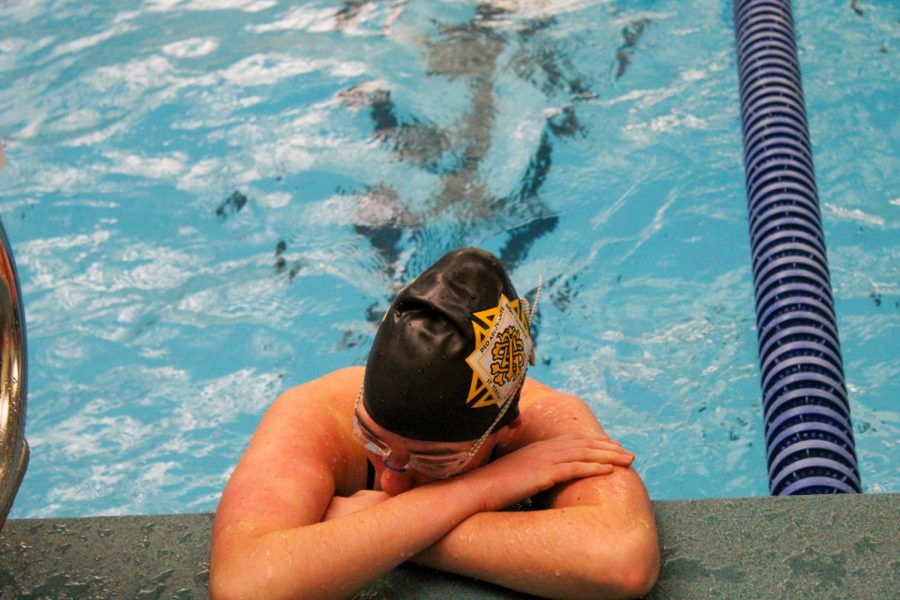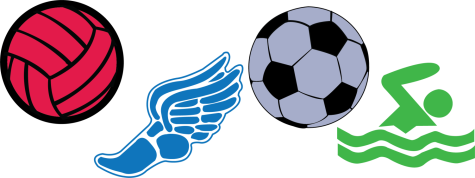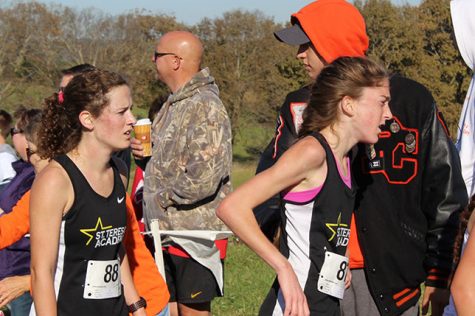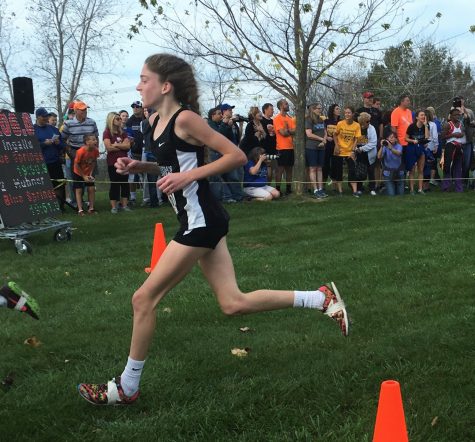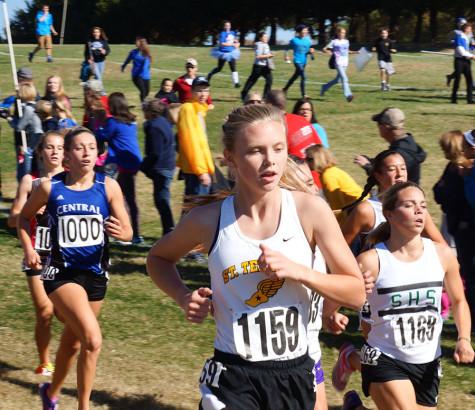Running low: iron deficiency strains athletes
More common in women than men, iron deficiency presents a dilemma for STA sports coaches and student athletes alike.
Senior Brooke Fallis catches her breath after her 50-meter freestyle race Jan. 25. Fallis realized she was iron deficient last year. photo by Katie Massman
February 12, 2020
Pacing her strides with the sound of her breath, junior Jeanne Eckels found her sneakers hitting unusually heavy against the street during a sweltering cross country practice. She was familiar with exhaustion, but this feeling was different — Eckels was experiencing the effects of iron deficiency.
“Comparing my first, second and third years of running, my first year I knew what it was like to feel tired or worn out, but then there were different feelings when I ran as a sophomore or junior where I realized it was something bigger than fatigue,” Eckels said.
Eckels’ head cross country coach Karen Moran has witnessed iron deficiency affect female athletes many times before in her 21 years of coaching at St. Teresa’s Academy.
“A cross country runner will not reach her full potential with low iron,” Moran said. “The biggest thing you notice with distance runners is feeling like you have dead legs.”
According to Moran, this deficiency is easily recognizable in her team.
“It sometimes looks like they’re not trying very hard or they look tired and they just look overly tired, worn down,” Moran said. “There’s just a look — I’ve been coaching for 21 years and there’s just a look — the other coaches see it too.”
Eckels most frequently recognizes her iron deficiency when self-evaluating for the symptoms her cross country coaches often mention, such as lightheadedness.
“Whenever I would get up, I would feel dizzy or faint — especially after stretching, I might see stars or be like, ‘Woah, I have got to sit down again,’” Eckels said.
OB/GYN Carrie Grounds often sees iron deficiency present itself similarly with her clients at the Women’s Clinic of Johnson County.
“If you are anemic, you could absolutely collapse, especially during strenuous activity or just because you can’t keep up with your oxygen carrying capacity,” Grounds said.
According to the University of California San Francisco, iron deficiency can prevent adequate oxygen from reaching a person’s muscle tissue during a workout — this can be season-ending for Moran’s athletes. The coach has taken a progressive approach to combating the problem within her team: iron supplements.
“They need to be taking these supplements year round and if they wait until the cross country season before they notice it happens, they really are going to deal with it all season — even though the levels may go up, but it’s very slow to go up,” Moran said.
Grounds believes iron absorption can be facilitated through a multitude of methods.
“Iron is best absorbed through food,” Grounds said. “If you are not adequately increasing the foods that are rich in iron — spinach, red meats — and we’ve tried oral supplements and you’re still not successful, we can send people in for IV iron where we bypass the gastrointestinal absorption issue. That will help everyone’s iron levels regardless.”
Along with the iron supplement, Moran provides nutrition recommendations alike Grounds’ to her athletes.
“We make sure they are eating lots of leafy greens, frosted mini wheats, fig newtons and food that will be a good source of iron — lean meats and stuff like that,” Moran said.
Eckels believes her coaches’ efforts make a positive impact inside and outside of practice.
“You want to keep yourself healthy, not just as an athlete but as a person,” Eckels said. “Iron deficiency does affect different aspects of your life outside of sports.”
As a woman, Eckels was at a higher risk of becoming iron deficiency even before starting cross country. According to American Family Physician, iron deficiency anemia is diagnosed in 2% of adult men, 9-12% of non-Hispanic white women and almost 20% of black and Mexican-American women in the United States — this gender gap is due to menstrual cycles.
“The reason women are more likely to become anemic is they are constantly turning over red blood cells due to the monthly loss of iron they have through bleeding — they have to constantly keep up,” Grounds said.
Moran believes her identity as a woman has created a comfortable team environment for discussing iron deficiency issues in conjunction with menses.
“I am our first head [cross country] coach that’s a female, so I think many of our coaches didn’t want to talk about it all that much because it could be embarrassing,” Moran said.
Eckels’ coaches are dedicated to nipping iron deficiency at its bud, and she believes their efforts surely pay off.
“Getting my iron levels where they should be is an ongoing process for me, but I can feel my progression,” Eckels said. “During practice, I felt much less fatigued and had more energy in my legs after I started taking an iron supplement.”



